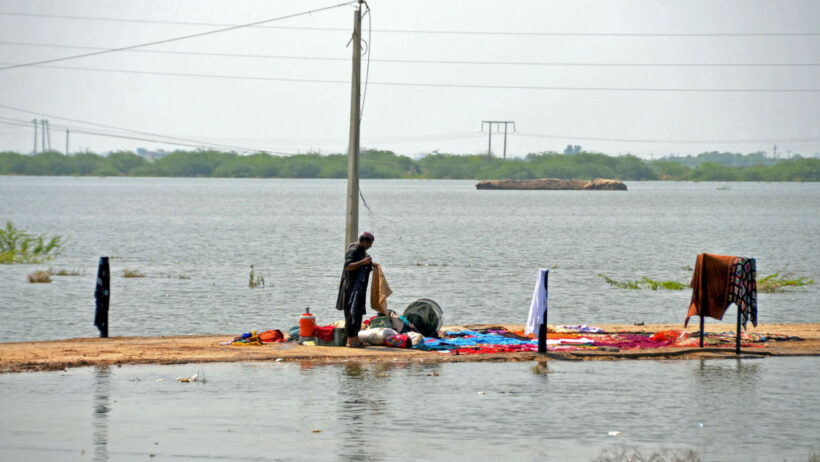As temperatures rise and weather patterns become increasingly erratic, the vital question looms: Can we reverse climate change—or is the damage already insurmountable? This inquiry poses a challenge that humanity must confront head-on, stirring a mix of hope and skepticism. The answer is neither unequivocally affirmative nor irreparably negative. Instead, it lies in the complex interplay of scientific innovation, public policy, and collective action.
To delve into this multifaceted dilemma, one must first grasp the intricate mechanisms behind climate change. Primarily fueled by anthropogenic activities, such as fossil fuel combustion and deforestation, greenhouse gas emissions have ascended to unprecedented levels. The accumulation of carbon dioxide and methane in the atmosphere forms a dense blanket, trapping heat and engendering a host of environmental crises. From rising sea levels to frequent natural disasters, the manifestations of climate change are stark and alarming.
Yet the core question persists: can we truly reverse these detrimental trends? In hypothetical scenarios, the concept of reversing climate change might evoke images of pristine forests, clear skies, and stable ecosystems. However, achieving this ideal reality requires grappling with several pivotal factors.
Firstly, a key avenue for potential reversal is carbon capture technology. These methods actively sequester atmospheric carbon dioxide, facilitating the extraction of this greenhouse gas from the air. While still in its nascent stages, advancements in engineered solutions could pave the way for a more manageable atmospheric concentration over time. Techniques like direct air capture and bioenergy with carbon capture and storage (BECCS) present promising, albeit technologically demanding, prospects. Yet, the proliferation of such technologies must be met with caution, as they should not serve as an excuse for continued fossil fuel reliance.
Moreover, reforestation and afforestation efforts hold the potential to significantly mitigate climate change impacts. Forests are nature’s carbon sinks, absorbing vast quantities of CO2 and playing an integral role in regulating the global climate. By restoring degraded land and increasing forested areas, we not only sequester carbon but also enhance biodiversity and water quality. However, the undertaking is monumental. It requires extensive collaboration, funding, and commitment from both individuals and governments.
Yet, the question remains: are these actions enough? While technological advancements and natural solutions present some pathways toward climate amelioration, addressing climate change necessitates a fundamental shift in societal behavior. Transitioning from fossil fuels to renewable energy sources, such as wind, solar, and hydroelectric power, is paramount. This shift demands concerted efforts to overhaul energy infrastructures while simultaneously reducing dependence on carbon-intensive resources.
Despite the science being convincing, political will often proves fleeting. The interplay between economic growth and environmental preservation creates a paradox where prioritizing immediate human needs can overshadow long-term planetary health. This results in a landscape marked by inertia, particularly in policy circles where short-term gains frequently eclipse long-term strategies. However, innovative policies that encourage sustainable practices and promote economic incentives for green technologies exist. The transition to a green economy is not merely an ecological imperative but a potential economic boon, generating jobs and fostering innovation.
On the communal level, grassroots movements have arisen, advocating for change and highlighting the urgency of the climate crisis. These local initiatives can influence broader policies and encourage individuals to adopt sustainable lifestyles. Whether through reducing waste, promoting local food sourcing, or advocating for public transportation, individual actions compound to create momentum for larger systemic change. Yet, this also raises questions about equity—who shoulders the burden of transition, and who bears the brunt of climate impacts? Ensuring that justice and fairness underpin climate action is essential to garnering widespread support.
While the challenge of reversing or mitigating climate change is daunting, multiple avenues exist. The synthesis of technological progression, community engagement, and policy reform constitutes a viable path forward. However, pivoting away from our current trajectory necessitates an unwavering commitment to climate action. Each step taken is a brick laid in the foundation of a sustainable future.
It is crucial to emphasize that while we may strive to reverse the damage done, fully eroding the impacts may be unattainable. Climate change has precipitated irreversible consequences. From the extinction of species to the cultural loss of communities affected by rising seas, some scars will remain. Hence, the imperative shifts from merely seeking reversal to fostering resilience and adaptability.
In conclusion, the quest to reverse climate change embodies both an enigma and an opportunity—a challenge that demands unprecedented unity and cooperation. By assimilating innovative technologies, re-envisioning policies, and galvanizing collective action, we can forge pathways to resilience, acknowledging that though the damage is substantial, the journey toward remediation need not be futile.
As we ponder the future, let’s consider a poignant prospect—what if our climb back to ecological balance not only reverses some damage but also leads us into an era of unprecedented environmental harmony? The implications suggest that while the scale and complexity of climate change may seem daunting, the collaborative effort rooted in scientific inquiry and grassroots engagement harbors the potential for transformation.








